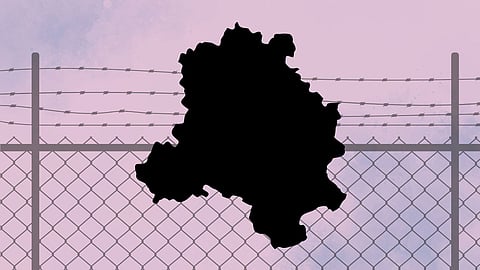

A recently released Hindi web series ‘Black Warrant’ set in Delhi’s Tihar prison complex, illuminates the dark and walled up spaces that a prison is. Though based in the 1980s, the issues it presents still continue to plague prisoners and prisons.
Including Tihar which is one of the largest in the world, Delhi currently has three prison complexes, housing within it 16 jails. Based on official statistics, which were last published in 2022, nearly 18.5 thousand inmates are incarcerated at these prisons, a massive 184.5 % more than the authorised capacity, leading to excessive overcrowding. The gross overcrowding in prisons impacts their right to live with dignity- a constitutional guarantee under Article 21 that has been repeatedly upheld by the Supreme Court.
Even more alarmingly, 91% of these prisoners are undertrials, that is they haven’t yet been proven guilty for the crimes that they are accused of. Consistently increasing over the last decade, Delhi’s jails now have the highest proportion of undertrials in the country. A large section of them are illiterate (27%) and most of them (60%) have not received education beyond Class X. More than half of the under-trial population belongs to Scheduled Castes, Scheduled Tribes or Other Backward Classes while more than two-thirds of Delhi jails’ prisoners earn less than Rs. 8000 per month and 43% reported annual income of less than Rs. 50,000 at the time of arrest.
According to government data, 13 unnatural deaths of inmates were reported in Delhi’s prisons in 2022. And of the 56 ‘natural deaths due to illness’, 6 were from a communicable disease TB, 3 from HIV, 5 from drugs/alcohol withdrawal and 8 from an undefined ‘others’. Many of these deaths could have been prevented through timely medical attention and effective psycho-social support.
Prison staff, which plays a central role in the functioning of these prisons too, remains inadequate to handle the large population of inmates. These jails are currently operating with only 77% of the sanctioned jail staff. Each correctional staff member caters to nearly 1100 inmates, an impossible workload. 30% of the posts of medical staff are vacant and for executive staff, almost 100 posts of Assistant Superintendents haven’t been filled.
While lack of resources is often expected to be the cause of most problems, with 576 crores allocated for the year 2022, the budget allocation for Delhi’s prisons is among the highest in the country. Its detailed disaggregation though is elusive. Only 274.8 crores of this are spent on inmates, 216.8 crores of this amount is in the ‘others’ category that ‘may’ include expenses incurred on ‘sanitation, hygiene, the transport facilities for movement of prisoners during Remand, Trials, Transfers and Hospital etc.’.This leaves little for food, clothing, medical and other basic provisions for the inmates. Delhi’s prisons that are meant to reform and rehabilitate inmates are spending a mere 0.003% of their allocated budget on vocational and other training, and only 0.07% on welfare activities. This highlights how distant the goal of prisoner reform and welfare really is. The recidivism rate in undertrials of Delhi is 33%.
One may argue that since Delhi has the highest reported crime rate in the country, arrests and subsequently high numbers of prisoners would thus be natural. In 2022, 1.27 lakh arrests were made under the erstwhile Indian Penal Code,1860 while the charge sheeting rate hovered around 30 per cent, which is among the lowest in the country. High arrest rates invariably burden the judiciary, with more than 12 lakh criminal cases currently pending before Delhi’s district courts, the courts have repeatedly cautioned against arrest until necessary, stating that indiscriminate arrests are indicative of a colonial mindset and create an impression of a police state.
The performance of the Under Trial Review Committees (UTRC) tasked with periodically reviewing cases of prisoners and recommending eligible ones for release, has also been underwhelming. In the previous year, the UTRCs of Delhi recommended merely 6.9% of the prisoners for release. Even among those, only 41% were finally released on bail.
Delhi’s prisons, particularly Tihar, has received more attention than any other prison in the country, and the recent web series presents a poignant and persistent systemic malaise that individual reformers can only alleviate impermanently. Cinematic depictions go a long way in changing perceptions but when it comes to prisons what we need is unabated monitoring by the higher judiciary and institutional support by the government. A concerted effort by all pillars of the justice system i.e., police, prisons, judiciary and legal aid is essential to ensure that Delhi’s prisoners no longer symbolise the proverbial darkness under the lamp.